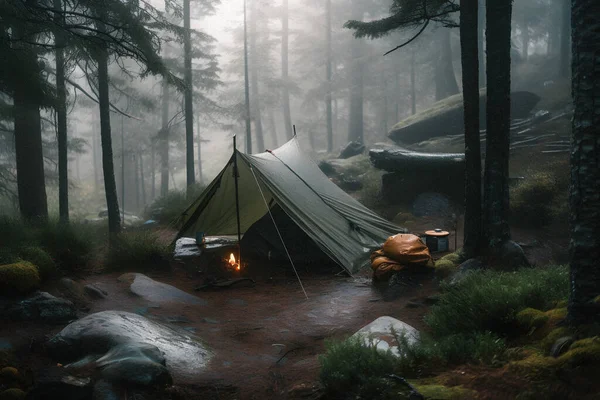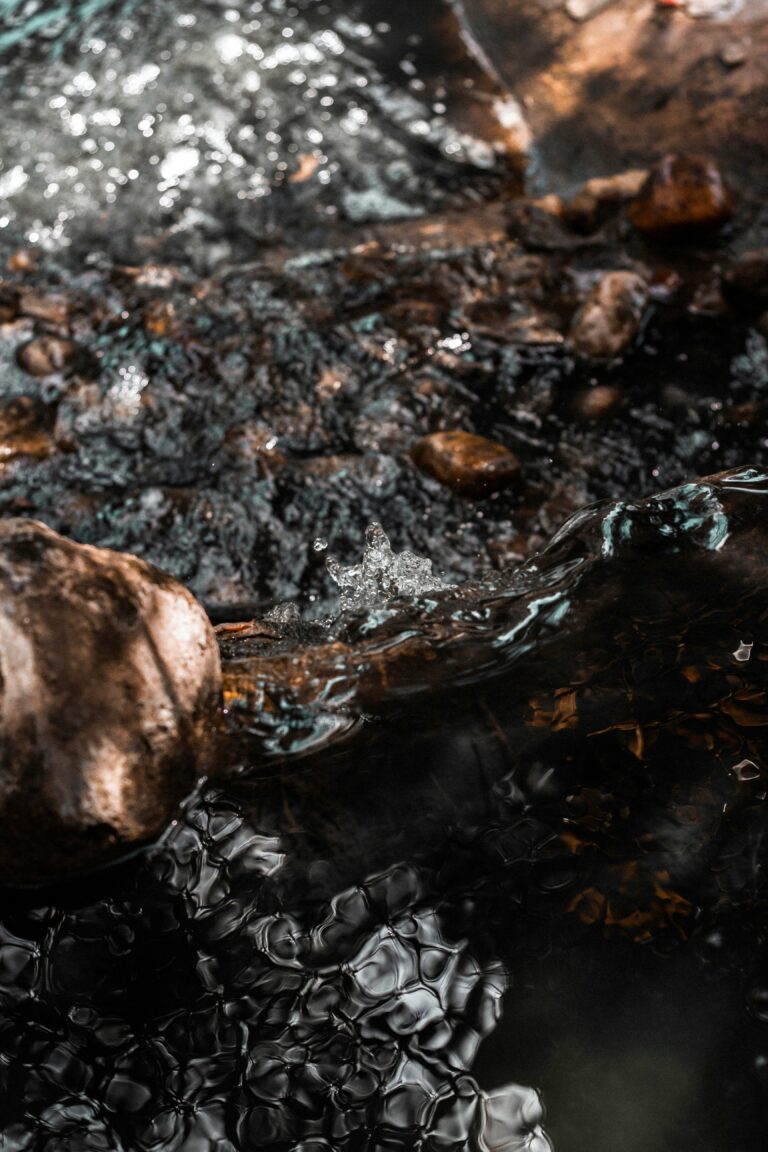Campfire-Free Cooking: 10 Easy Ways to Cook Meals Outdoors This Summer (With Recipes)
Ditch the Flames, Keep the Flavor
This post contains affiliate links. I may earn a small commission at no extra cost to you. Learn more.
If you’ve ever dealt with fire bans, soggy firewood, or just want a safer option for outdoor meals, this guide has you covered. These **campfire free cooking** methods are cleaner, easier, and still deliver delicious results—no open flame required. Not every outdoor adventure needs a roaring fire to enjoy a satisfying meal. Whether you’re under a burn ban, camping in dry areas, or just want a safer, more convenient way to cook, there are plenty of campfire-free options that still let you feast in the fresh air. This summer, skip the smoke and try one of these 10 smart, safe, and flavorful cooking methods—each with a must-try recipe included!
1. Portable Propane Stove
Portable propane stoves are one of the most reliable and versatile tools for outdoor cooking without a campfire. They offer fast heat, adjustable flames, and consistent cooking power, making them suitable for nearly any type of meal. Their ease of use and quick ignition system make them ideal for both beginners and experienced campers alike. Most models are designed for tabletop use, with wind guards and dual burners for multitasking.
Pros: Easy to use, fast heating, works in various weather conditions, readily available fuel.
Cons: Bulky compared to minimalist systems, propane canisters must be packed and stored carefully.
Best For: Car camping, group trips, or anyone wanting to cook full meals outdoors without the learning curve.
Safety Tip: Always cook in a well-ventilated area and ensure the stove is on a stable, level surface to avoid tipping.
Recipe: One-Pot Southwest Chicken Skillet
- Ingredients:
- 1 lb chicken breast (cubed)
- 1 can black beans
- 1 cup corn
- 1 cup salsa
- 1 cup cooked rice
- 1 tsp chili powder
- Instructions:
- Heat oil in skillet over medium heat.
- Add chicken; cook until browned.
- Add beans, corn, salsa, and chili powder.
- Stir in cooked rice. Simmer 5 minutes.
Gear Pick: Coleman Triton Propane Stove
2. Butane Burner
Butane burners are compact and highly portable, making them an excellent choice for campers who want a no-fuss cooking experience without hauling larger gear. These burners use small canisters of butane fuel that easily lock into place and ignite with the press of a button. They’re particularly favored for solo camping, quick meals, and even picnics where space and simplicity matter most.
Pros: Lightweight, easy to set up, budget-friendly, works well for small meals and beverages.
Cons: Less wind-resistant than propane stoves, butane performance may drop in cold temperatures.
Best For: Car camping, tailgating, roadside picnics, or minimalist campers who want a hot meal fast.
Safety Tip: Always use on a stable surface and never leave the burner unattended—especially in windy conditions or around dry brush.
Recipe: Skillet Breakfast Hash
- Ingredients:
- 3 potatoes, diced
- 1 onion, chopped
- 1 bell pepper
- 4 eggs
- Salt & pepper
- Instructions:
- Cook potatoes until golden.
- Add onions and peppers; saute 5 min.
- Make wells and crack eggs in. Cover until eggs set.
Gear Pick: GasOne Butane Stove
3. Solar Oven
Harness the power of the sun! Solar ovens are an innovative, eco-friendly solution for campfire-free cooking, especially during sunny summer months. These devices use reflective surfaces to concentrate sunlight, creating a surprisingly effective cooking chamber that can reach temperatures over 300°F. They excel at baking, slow cooking, and warming food—making them perfect for dishes like lasagna, casseroles, and even baked desserts.
Pros: No fuel needed, environmentally friendly, safe for fire-restricted areas, and nearly silent operation.
Cons: Requires full sun and longer cooking times; not ideal for cloudy days or quick meals.
Best For: Eco-conscious campers, families with kids, or anyone enjoying long afternoons outdoors.
Safety Tip: Always monitor your oven position to track the sun’s path, and keep it secured from tipping on uneven surfaces.
Recipe: Solar Veggie Lasagna
- Ingredients:
- Lasagna noodles (pre-cooked)
- 1 zucchini, sliced
- 1 cup ricotta
- 2 cups marinara sauce
- 1 cup shredded cheese
- Instructions:
- Layer sauce, noodles, ricotta, veggies, and cheese.
- Repeat layers.
- Bake in solar oven for 1.5–2 hours.
Gear Pick: GoSun Sport Solar Oven
4. Jetboil System
Jetboil systems are a favorite among ultralight backpackers and hikers due to their efficiency, portability, and speed. These compact cooking units are designed to boil water in under two minutes, making them perfect for quick, on-the-go meals that only require hot water. While not ideal for frying or complex cooking, Jetboil excels when you’re short on time, carrying weight, or camp space.
Pros: Ultra-fast boil time, compact and self-contained, uses minimal fuel, great for dehydrated meals and beverages.
Cons: Limited to boiling and basic heating, small cooking capacity, not versatile for large or fresh-ingredient meals.
Best For: Thru-hikers, backpackers, solo campers, or minimalist adventurers who prioritize speed and simplicity.
Safety Tip: Use only with approved Jetboil fuel canisters and never operate inside enclosed tents or spaces due to carbon monoxide risk.
Recipe: Instant Ramen Upgrade
- Ingredients:
- 1 pack ramen noodles
- 1 boiled egg
- 1 tbsp soy sauce
- 1 tsp sesame oil
- Sliced green onions
- Instructions:
- Boil water in Jetboil.
- Add noodles and flavor packet.
- Top with egg, soy, oil, and onions.
Gear Pick: Jetboil Flash Cooking System
5. Camping Griddle or Skillet
Griddles and skillets are classic and versatile additions to your camp kitchen, offering a flat cooking surface perfect for everything from breakfast to dinner. These tools work well with most propane or butane stoves and give you the freedom to cook without relying on pots or pans with tall sides. The large surface area means you can cook multiple items at once—like pancakes, sausage, and eggs—making them ideal for family-style meals.
Pros: Wide cooking surface, great for searing, ideal for group meals, easy to clean.
Cons: Heavier and bulkier than single-pot solutions; requires level surface and external heat source.
Best For: Families, RV campers, or anyone wanting to cook hearty meals like burgers or a full breakfast spread.
Safety Tip: Always use heat-resistant gloves when handling metal griddles and never pour water on a hot surface to avoid warping.
Recipe: Griddle Smash Burgers
- Ingredients:
- Ground beef (1/4 lb patties)
- Burger buns
- Cheese slices
- Pickles, ketchup, mustard
- Instructions:
- Preheat griddle.
- Smash patties flat, sear both sides.
- Add cheese, assemble with toppings.
Gear Pick: Blackstone Tabletop Griddle
6. Folding Sterno Stove (Canned Heat)
Folding Sterno stoves are incredibly compact and easy-to-use devices powered by canned heat. Often used for emergency kits, tailgating, or minimalist camping setups, they provide a flame without the need for gas canisters or electricity. While they won’t produce intense heat like propane or butane systems, they’re sufficient for warming up canned food, boiling water, or slow-simmering a basic meal.
Pros: Ultra-lightweight, no pressurized fuel required, inexpensive, great for emergency preparedness.
Cons: Low heat output, slower cook times, not ideal for large or raw meals.
Best For: Emergency kits, ultralight campers, or no-fuss warm-up meals.
Safety Tip: Always place the stove on a nonflammable surface and keep hands clear of the open flame. Canned heat burns with a nearly invisible flame, so take extra caution during use.
Recipe: Hearty Chili-in-a-Can
- Ingredients:
- 1 can chili beans
- 1/2 lb ground beef (pre-cooked)
- 1/2 cup diced tomatoes
- Chili seasoning packet
- Instructions:
- Mix all in a pot over Sterno flame.
- Simmer for 10–15 minutes.
Gear Pick: Sterno Portable Folding Stove
7. Electric Hot Plate (For Campsites with Hookups)
Electric hot plates are a fantastic option for campsites that provide electrical hookups. These small yet powerful appliances bring the convenience of indoor cooking to the outdoors, allowing you to prepare meals just like you would at home. They work well with any standard cookware and are ideal for recipes that require precise temperature control or gentle simmering.
Pros: Reliable and consistent heat, no fuel needed, compatible with all pots and pans, easy cleanup.
Cons: Requires access to electricity, not suitable for remote or off-grid camping, cords must be managed safely.
Best For: RV camping, glamping setups, or established campgrounds with power access.
Safety Tip: Keep cords elevated and away from walkways to prevent tripping, and avoid using in rainy or wet conditions to reduce the risk of electric shock.
Recipe: Camp Mac & Cheese
- Ingredients:
- 2 cups macaroni
- 1/2 cup milk
- 1 cup shredded cheddar
- 1 tbsp butter
- Instructions:
- Boil pasta, drain.
- Stir in milk, butter, and cheese until creamy.
Gear Pick: Cuisinart Single Burner Hot Plate
8. Thermal Cooker
Thermal cookers are ingenious tools that allow you to slow-cook food without any ongoing heat source. After bringing your ingredients to a boil in an inner pot, you simply place the pot inside the thermal unit, which uses insulation to retain heat and continue cooking over several hours. This method is incredibly fuel-efficient and perfect for hands-off meals while you’re exploring, hiking, or relaxing at your campsite.
Pros: No fuel needed after initial boil, safe to leave unattended, excellent for soups, stews, and meats.
Cons: Requires initial boiling step, not suitable for grilling or frying, limited to meals that can continue cooking with residual heat.
Best For: Long hikes, base camps, emergency prep, or families who want a hot dinner ready after a day of adventure.
Safety Tip: Make sure the pot reaches a full boil before placing it in the thermal cooker—underheating can result in undercooked food or unsafe temperatures.
Recipe: No-Fire Pulled Pork
- Ingredients:
- 1 lb pork shoulder (cut small)
- 1/2 cup BBQ sauce
- 1/4 cup broth
- Instructions:
- Boil meat and sauce for 15 min.
- Place in thermal cooker for 4–6 hours.
- Shred and serve on buns.
Gear Pick: Thermos Shuttle Chef
9. Backpacking Alcohol Stove
Ultralight and burn-safe, alcohol stoves are a minimalist’s dream. These stoves are especially popular among thru-hikers and long-distance backpackers because they’re incredibly lightweight, low-cost, and simple to use. They typically burn denatured alcohol or ethanol and are made from small metal canisters, some of which can even be homemade. Though they offer limited temperature control, they’re reliable for boiling water and reheating dehydrated meals.
Pros: Ultralight and compact, easy to make or repair, fuel is inexpensive and widely available.
Cons: Not wind-resistant, slow to boil, difficult to control heat, and requires careful monitoring.
Best For: Thru-hikers, ultralight backpackers, and those with minimalist gear setups.
Safety Tip: Always use on a stable, nonflammable surface and keep a lid handy to extinguish the flame safely, as alcohol flames can be nearly invisible in daylight.
Recipe: Tuna Couscous Bowl
- Ingredients:
- 1 pouch tuna
- 1 cup couscous
- 1 cup hot water
- Olive oil, lemon, herbs
- Instructions:
- Boil water; pour over couscous.
- Let sit covered for 5 min.
- Stir in tuna, oil, lemon, and herbs.
Gear Pick: Trangia Spirit Burner
10. Cold Soaking
Yes, you can prepare meals without any heat! Cold soaking is a popular technique among ultralight backpackers, raw food enthusiasts, and anyone looking for the ultimate low-effort, no-fuel cooking method. It involves rehydrating ingredients by letting them sit in cold or room-temperature water for an extended period—usually several hours or overnight. Though limited to certain meal types, it’s an excellent strategy for conserving fuel and gear space.
Pros: Requires no heat, fuel, or flames; lightweight and gear-free; perfect for hot weather or minimal setups.
Cons: Limited to soft foods and rehydratable ingredients; long soaking time; not suitable for those needing hot meals.
Best For: Thru-hikers, raw food diets, emergency food plans, or any ultra-lightweight packer trying to keep things simple.
Safety Tip: Always use clean, potable water and soak foods in sealed containers. In hot climates, store soaked items in a cooler or shaded area to prevent spoilage.
Recipe: Overnight Oats-in-a-Jar
- Ingredients:
- 1/2 cup rolled oats
- 1/2 cup milk or almond milk
- 1 tbsp chia seeds
- Honey, berries, nuts
- Instructions:
- Combine in jar, shake well.
- Let sit 8+ hours in cooler or shaded area.
Gear Pick: Wide-mouth Mason Jar + Lid
Final Tips for Campfire-Free Cooking Success
- ✅ Always check local regulations to avoid fire bans or campsite-specific restrictions.
- ✅ Bring backups (extra fuel, lighter, windscreen) in case of weather changes or equipment failure.
- ✅ Pack cleanup supplies—biodegradable soap, scrubber, trash bags—to leave no trace and avoid critters.
- ✅ Store perishables in a reliable cooler or thermal bag to maintain safe food temps and prevent spoilage.
Troubleshooting & Hacks:
- Jetboil won’t ignite? Check for clogged burner holes or a loose fuel connection.
- Windy day? Use a portable windscreen or set your stove behind a rock/log to maintain flame.
- Food sticking to griddle? Preheat properly and apply a light oil layer first.
- Solar oven too slow? Use black cookware and angle the oven directly at the sun.
- Need to conserve fuel? Use a lid while cooking to trap heat and reduce cook time.
- Don’t have a cooler? Bury perishables a few inches underground in a shaded area temporarily.
These practical tips can help you avoid common frustrations and make your campfire-free cooking even more enjoyable!
Final Thoughts: Modern Meals, No Flames Required
Campfire-free cooking is more than just a convenience—it’s often safer, faster, and more versatile. Compared to traditional campfire cooking, which can be smoky, messy, and sometimes even hazardous during dry seasons, these modern methods offer far more control and consistency. There’s no need to battle smoke in your eyes, wait for coals to settle, or worry about fire safety restrictions.
Many of these alternative options—like propane stoves or solar ovens—also cut down on prep and cleanup time, making them perfect for families, solo travelers, and anyone short on patience or space. Where traditional campfire cooking demands time and constant attention, these methods let you multitask or relax while your meal simmers away. Ready to upgrade your outdoor cooking game? Explore the gear links above and try one of these recipes on your next trip!
📚 Further Reading
Looking for more outdoor cooking skills? Check out these guides:
-
How to Make a DIY Soda Can Stove (Step-by-Step Survival Guide)
-
Propane vs Isobutane Backpacking Stoves: Which Fuel Wins in 2025?
-
🔥 How to Build a Bushcraft Cooking Tripod (Step-by-Step Guide)







